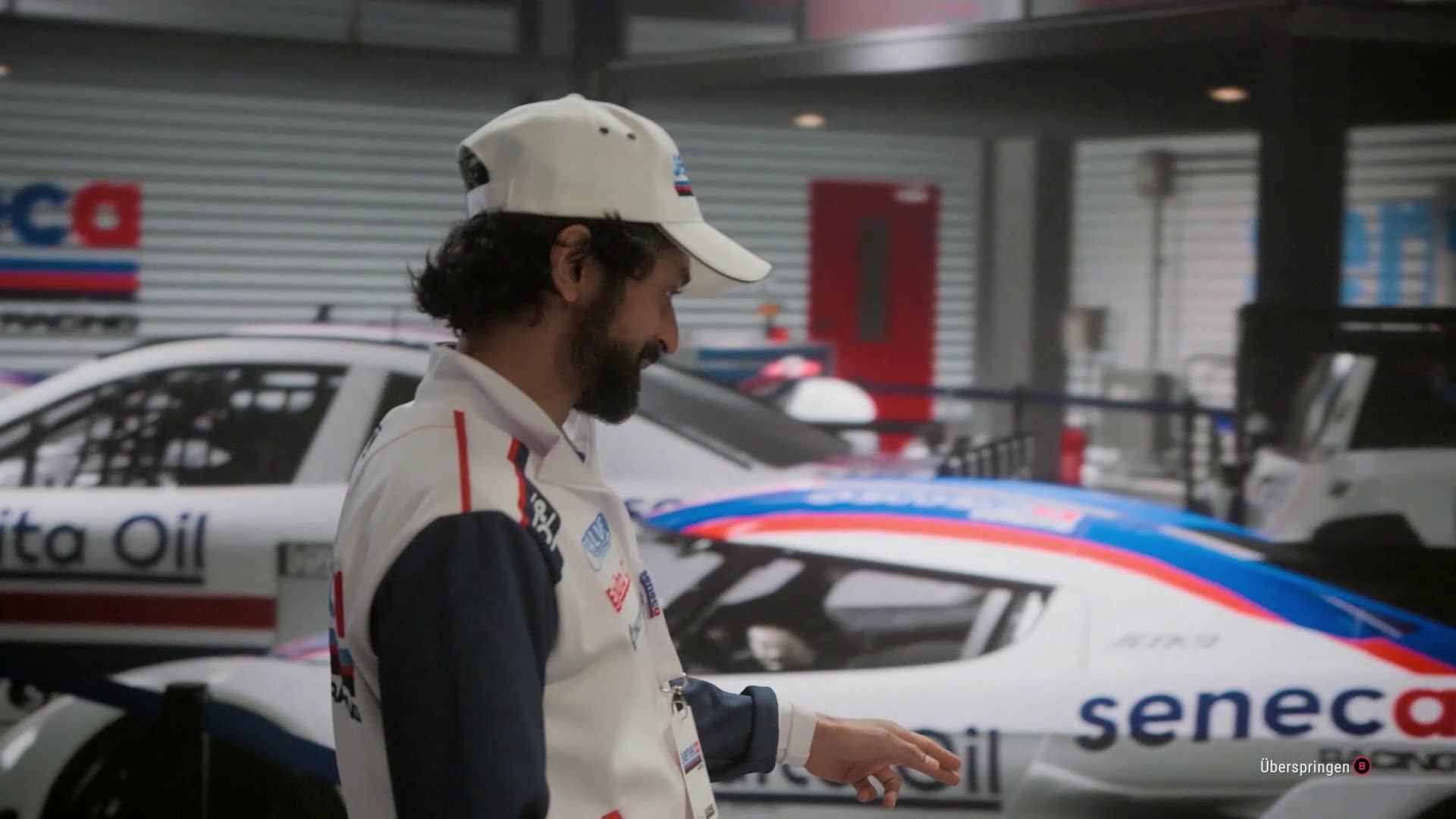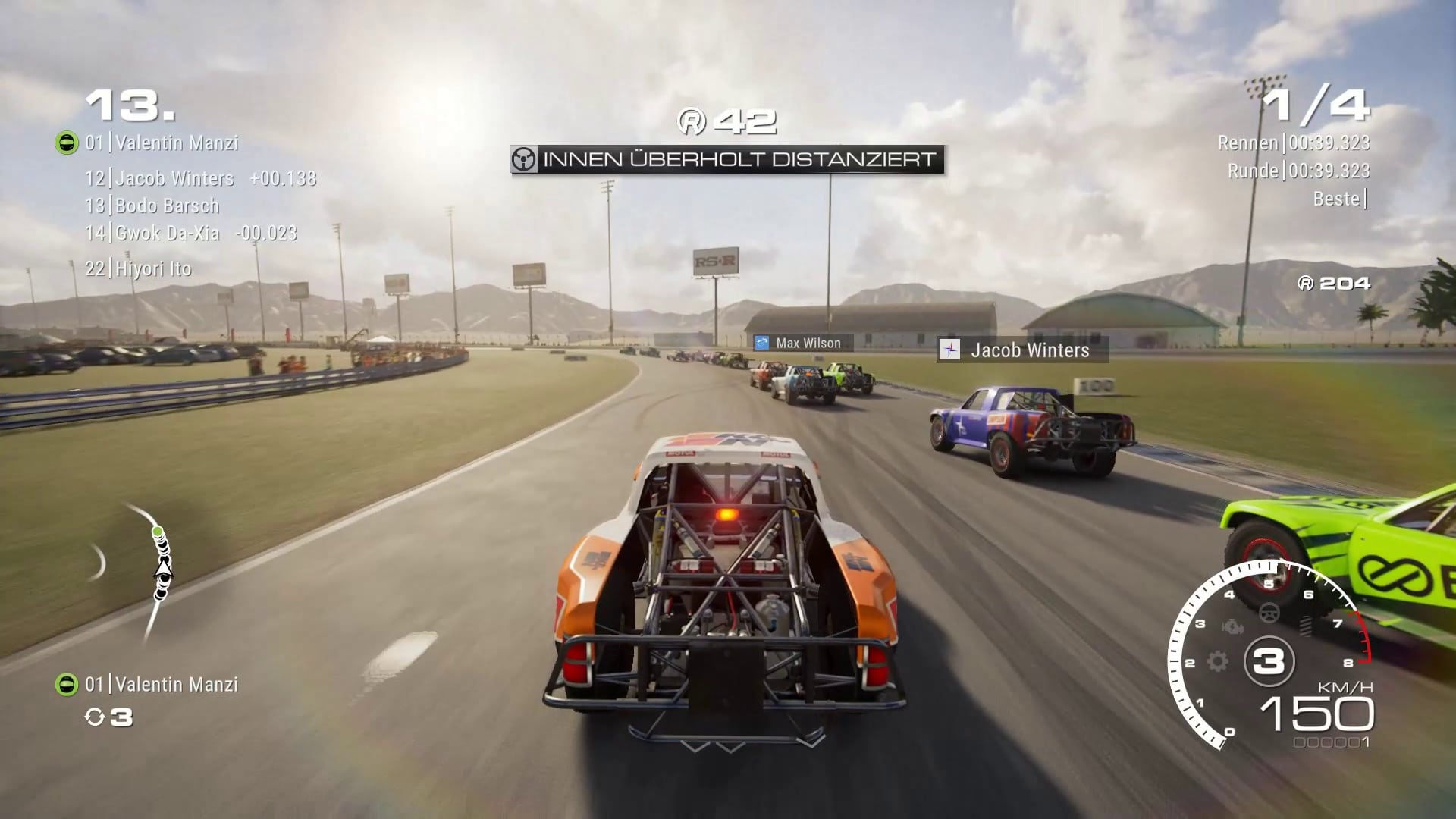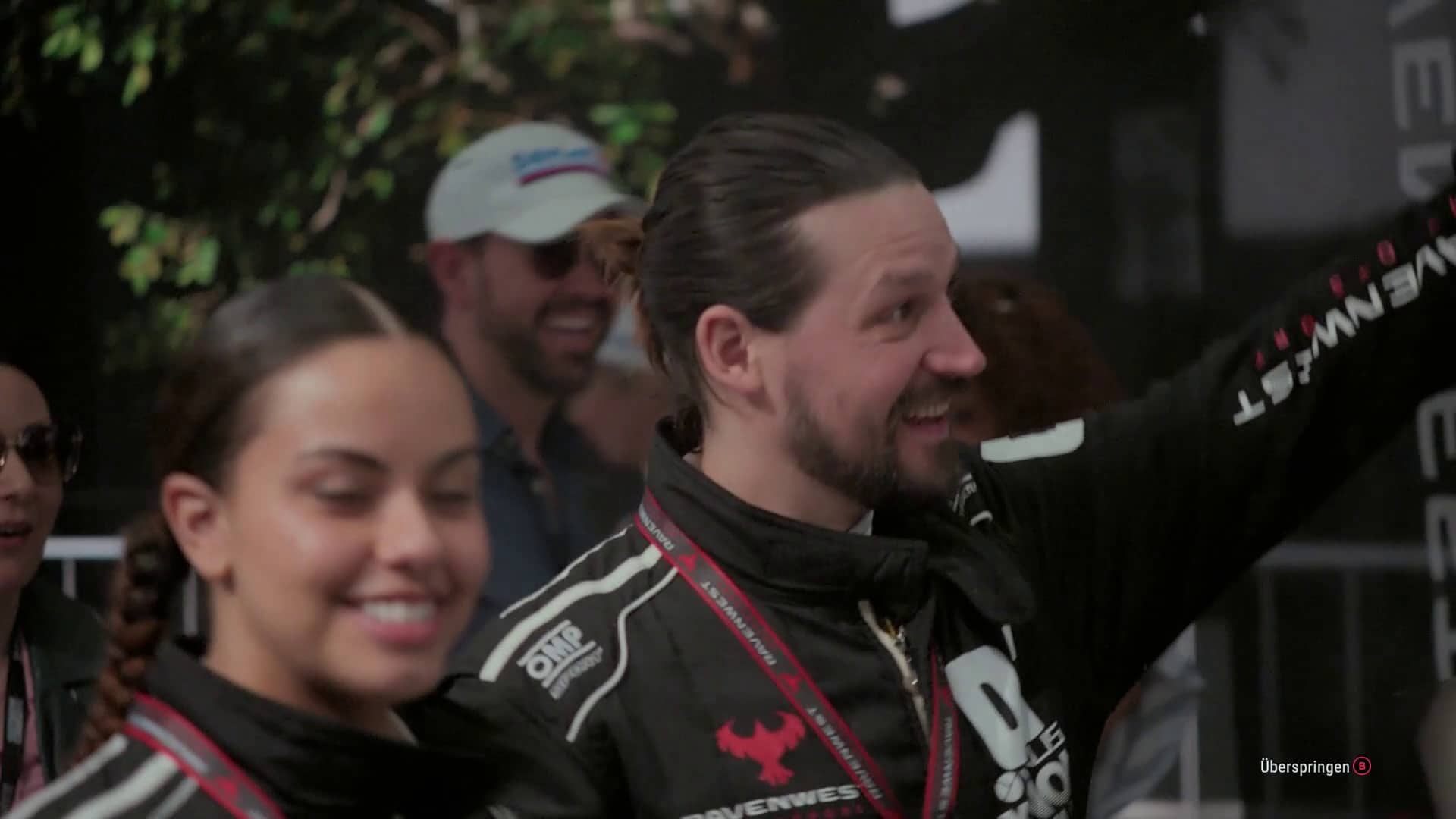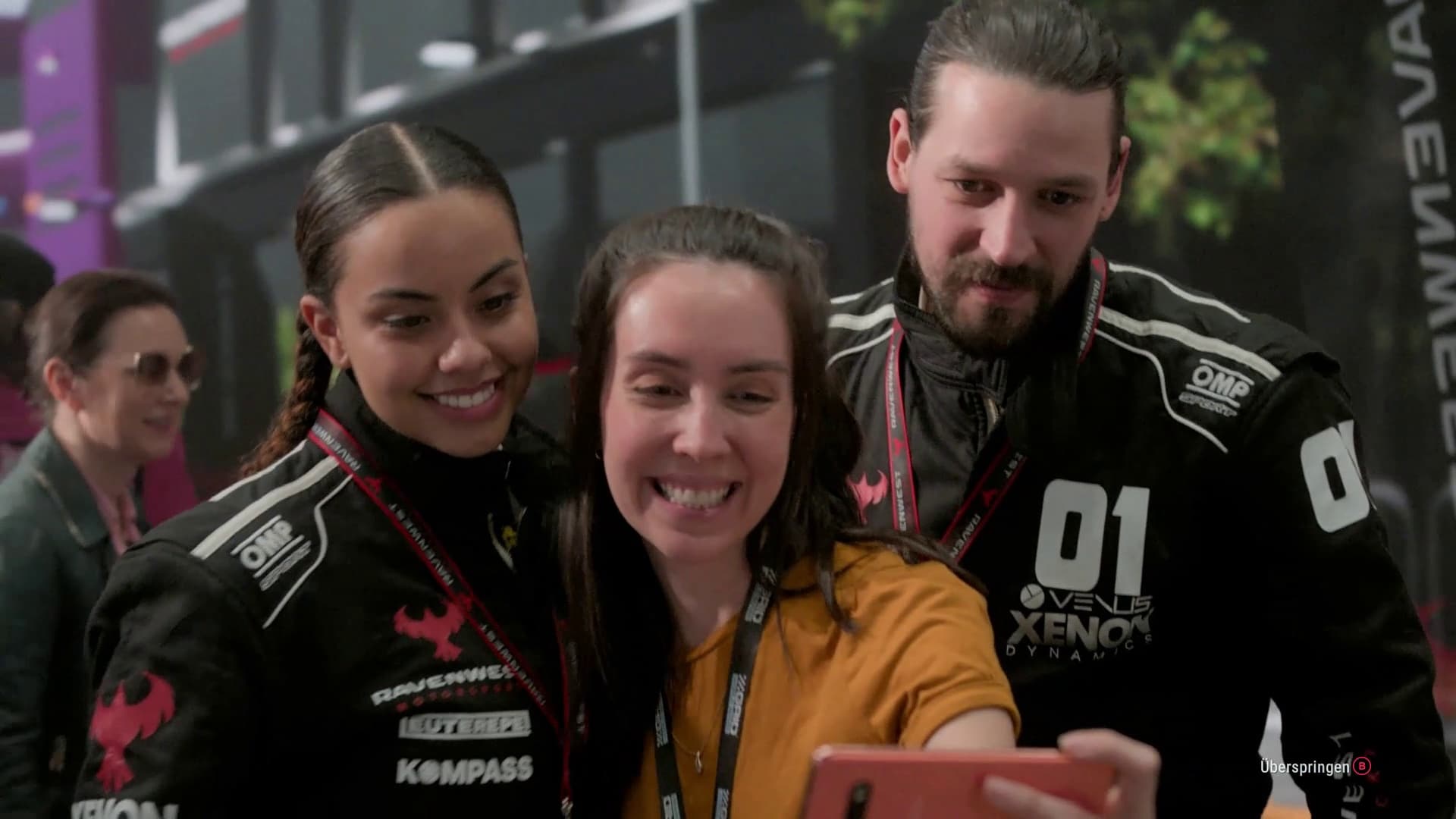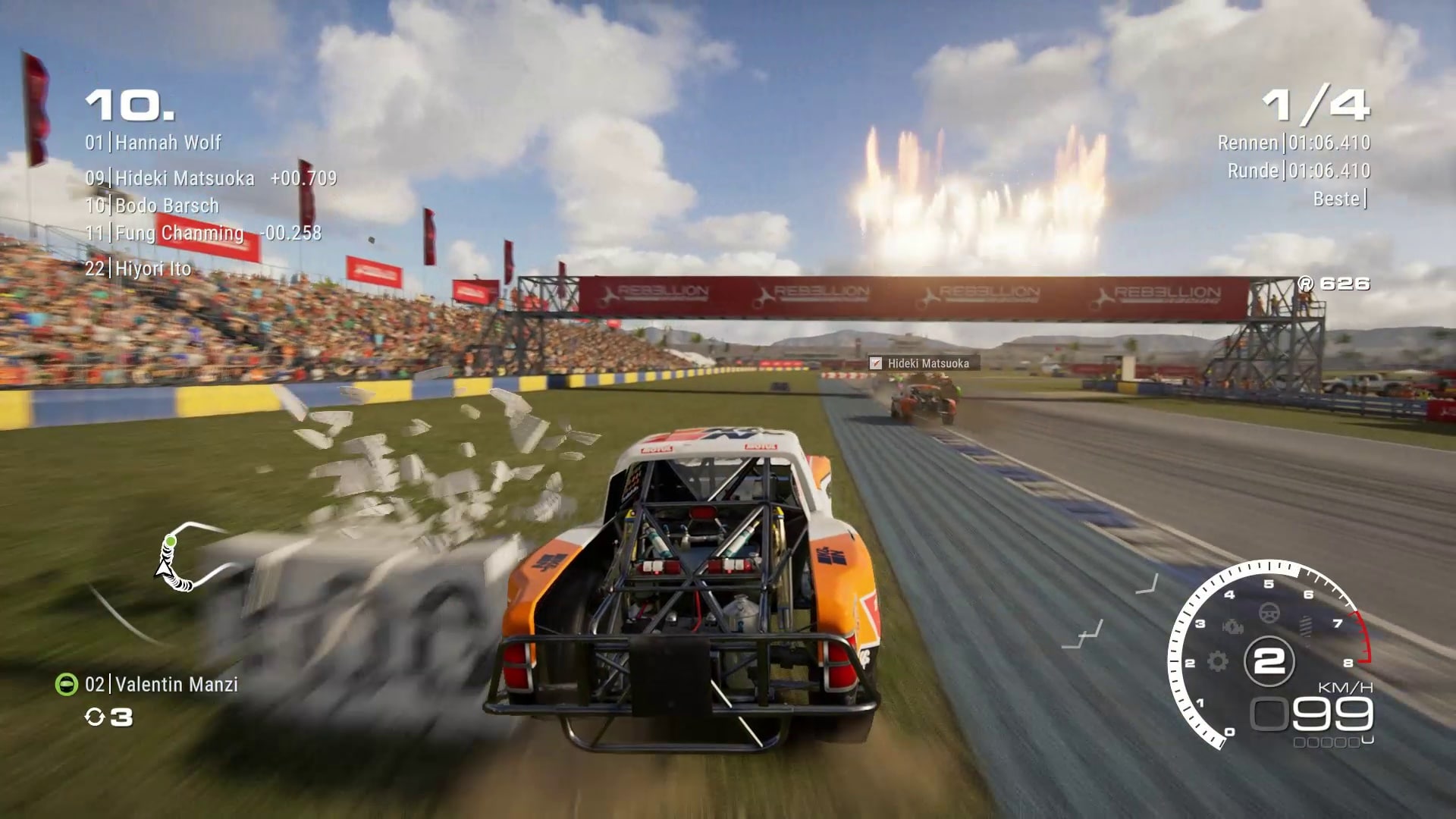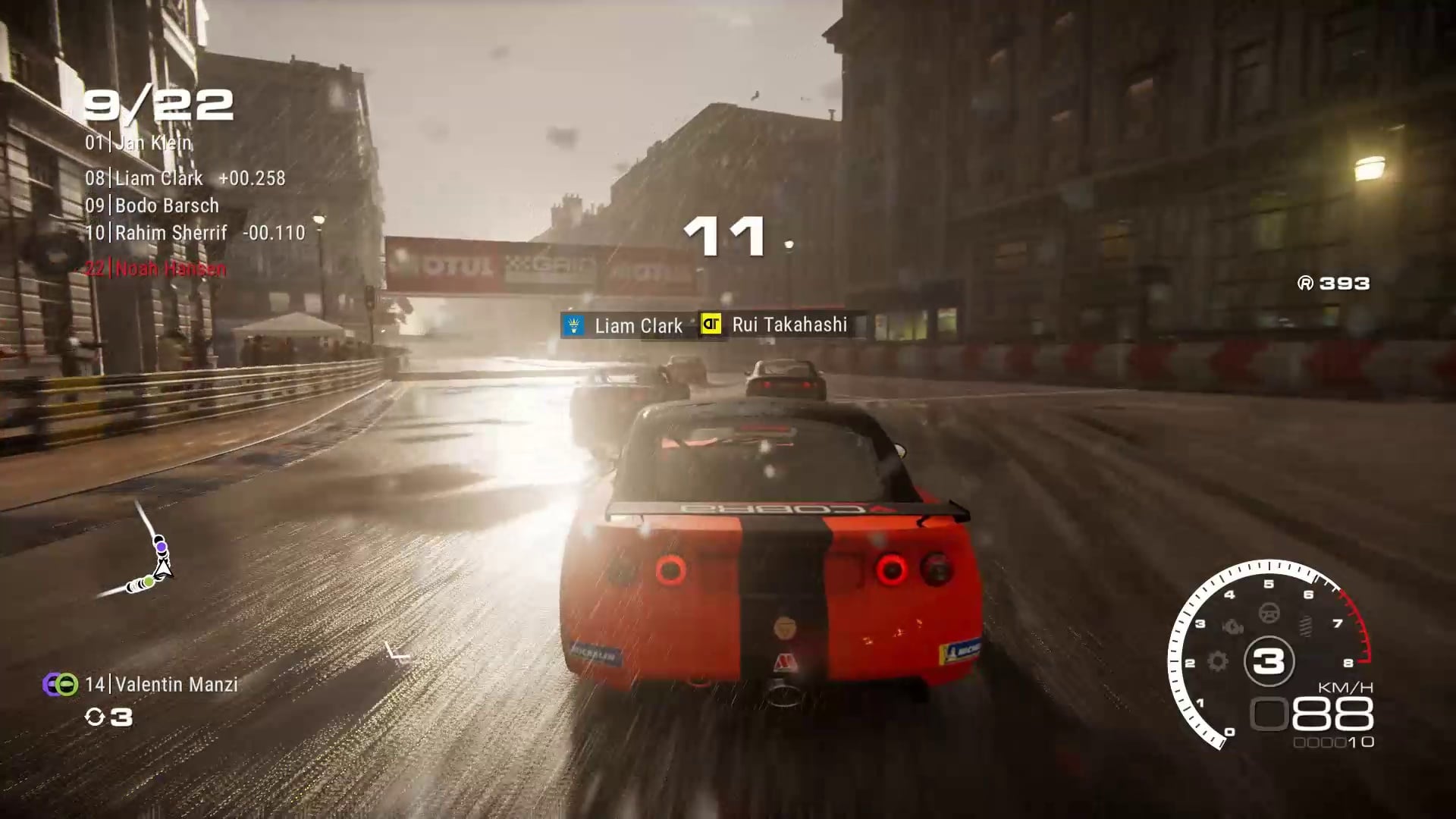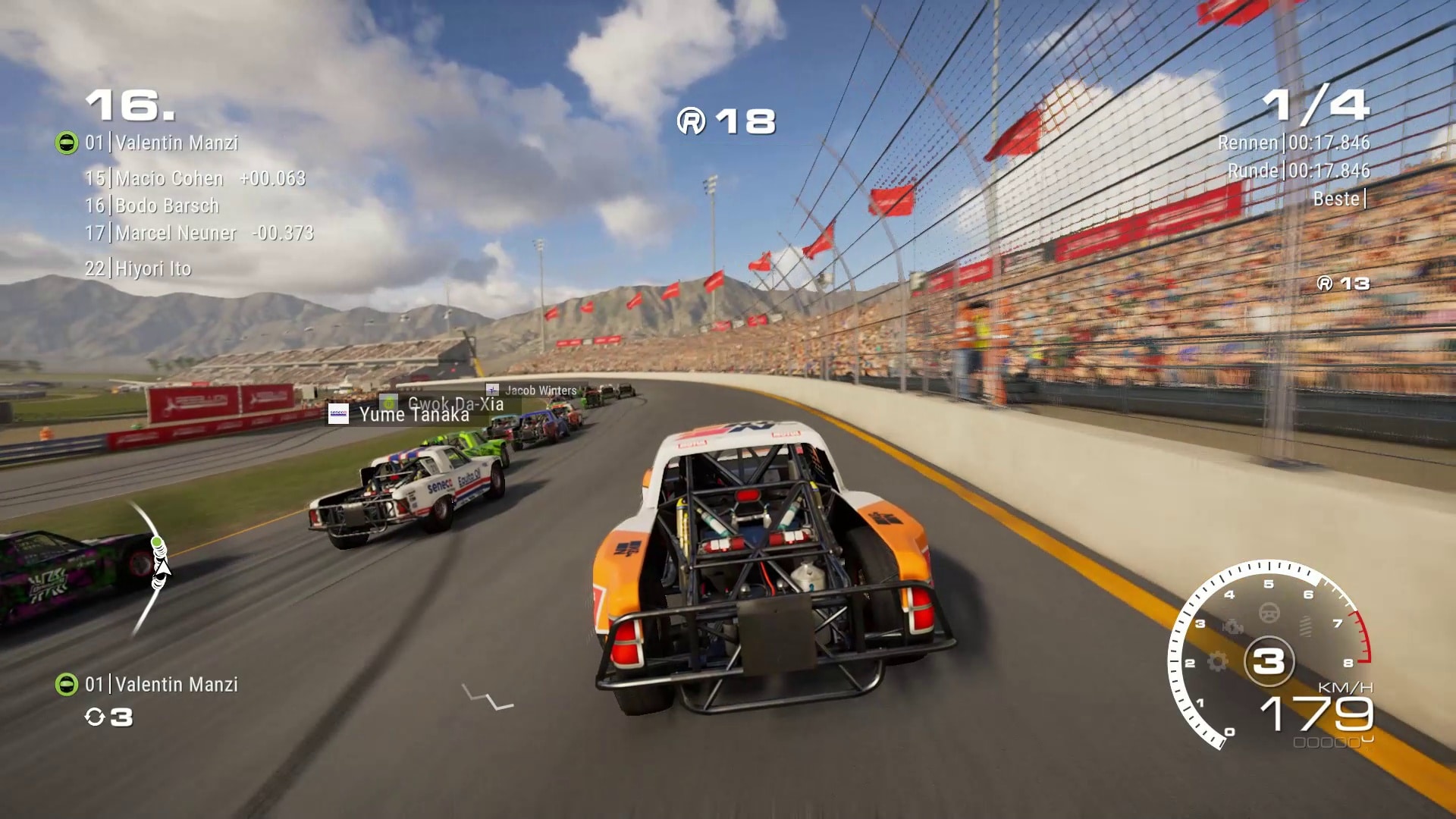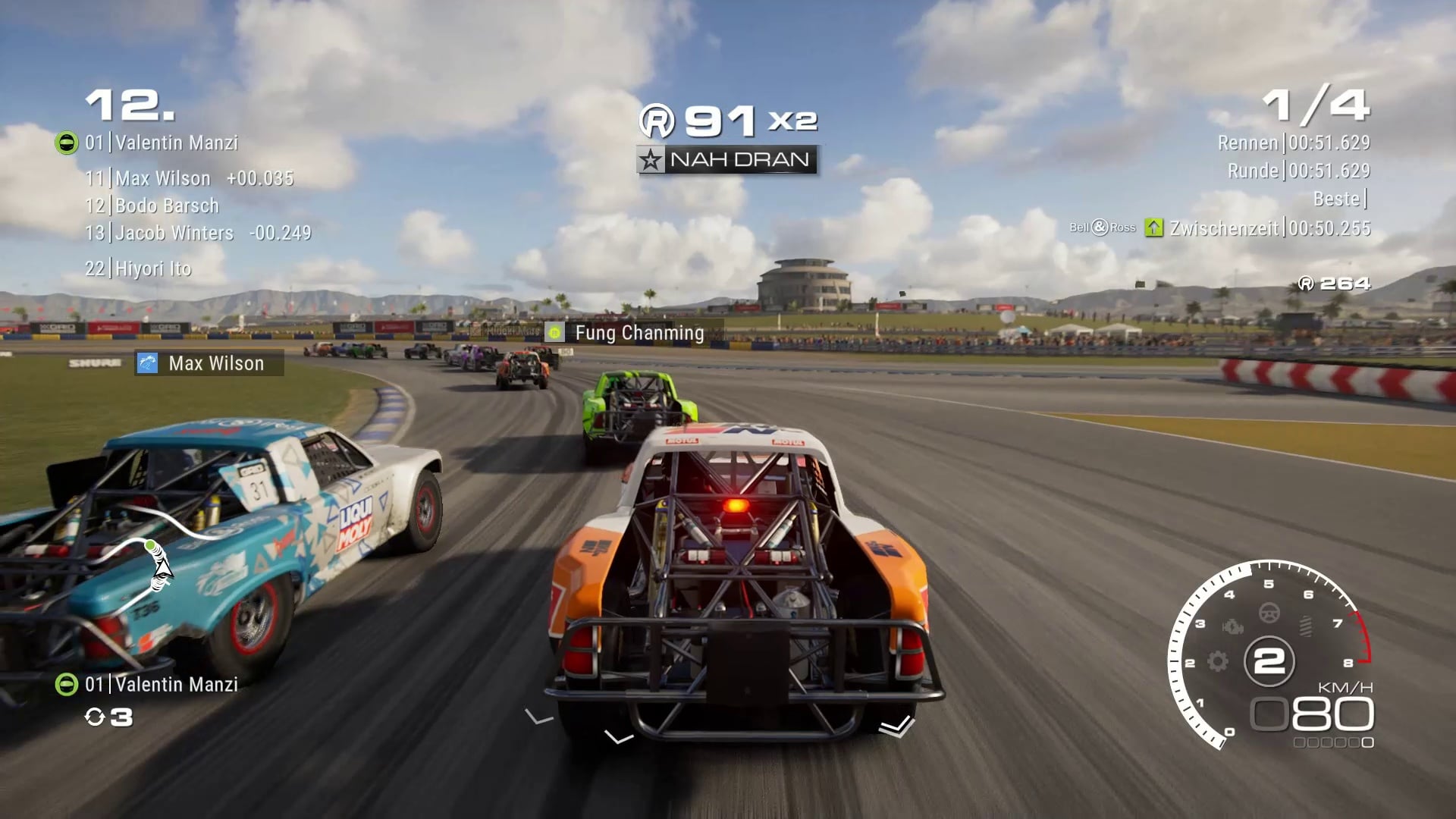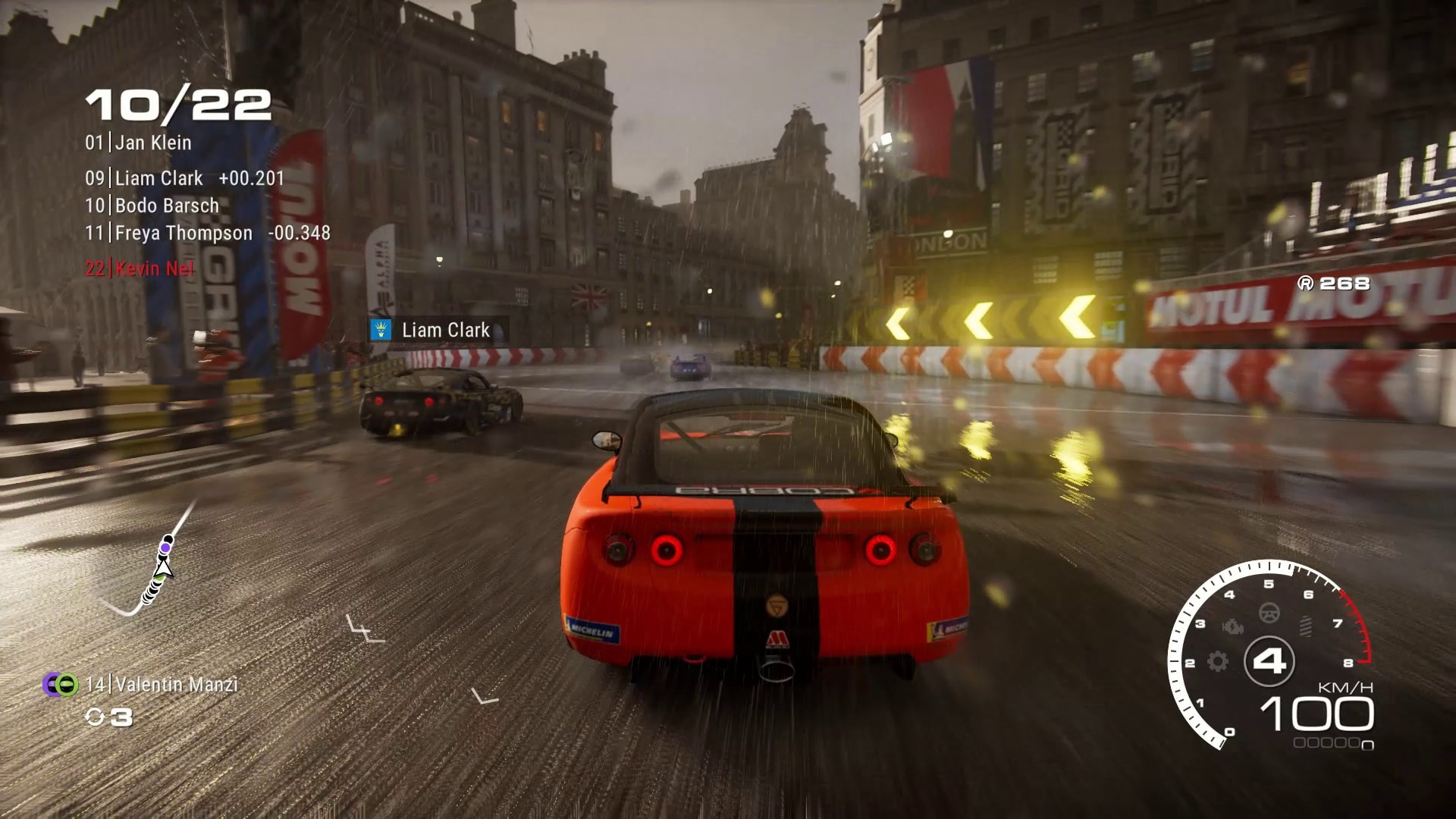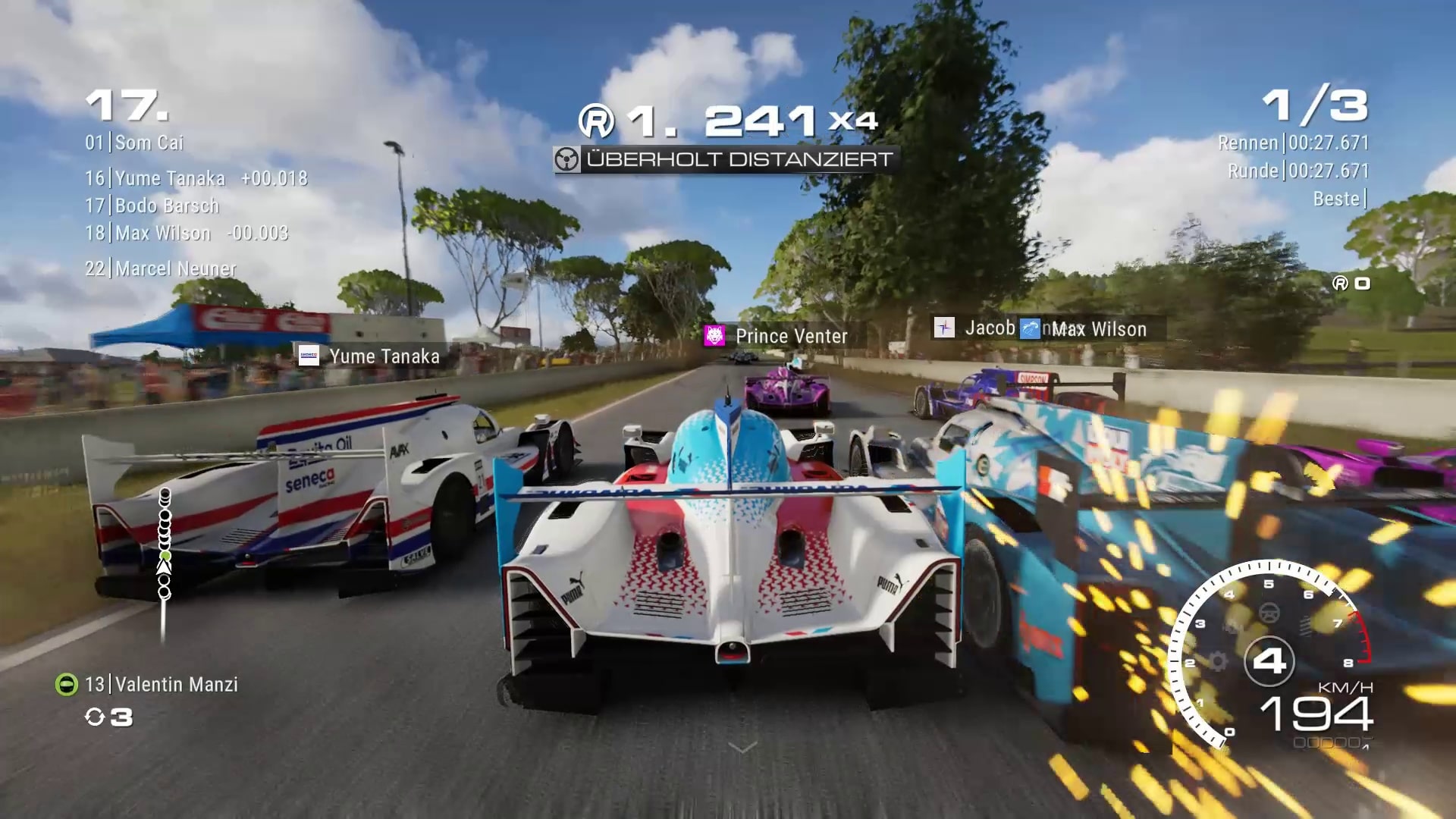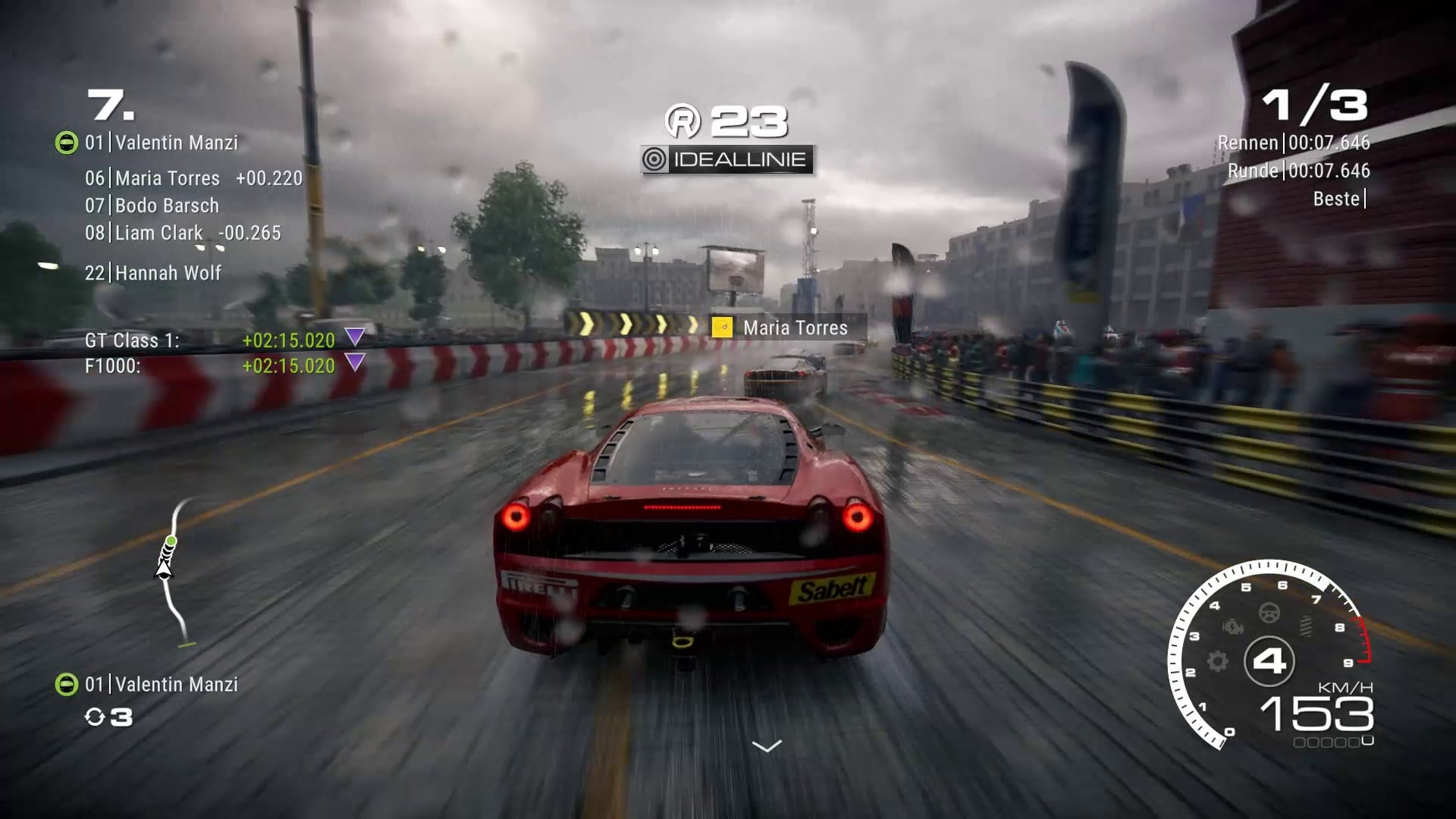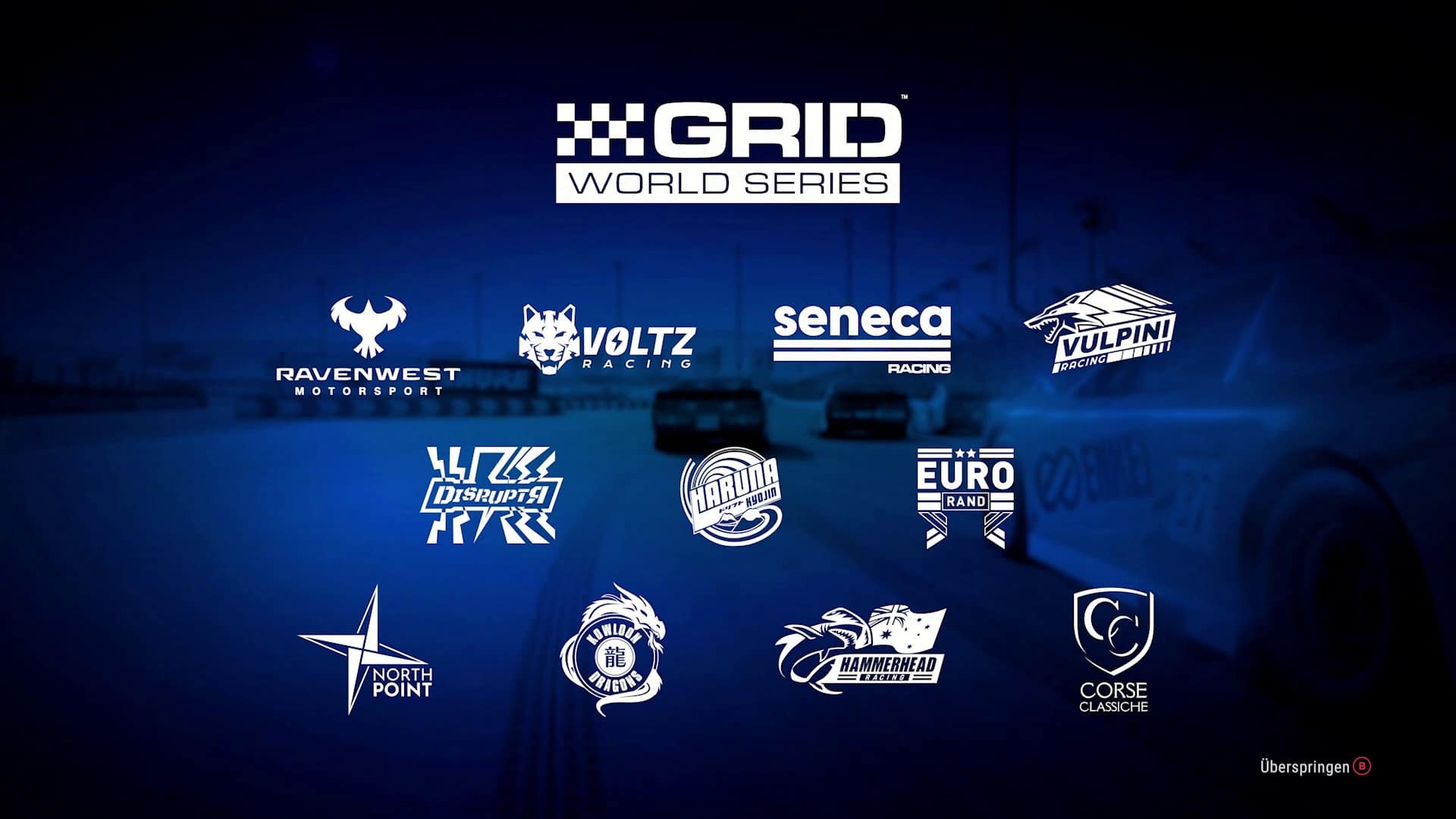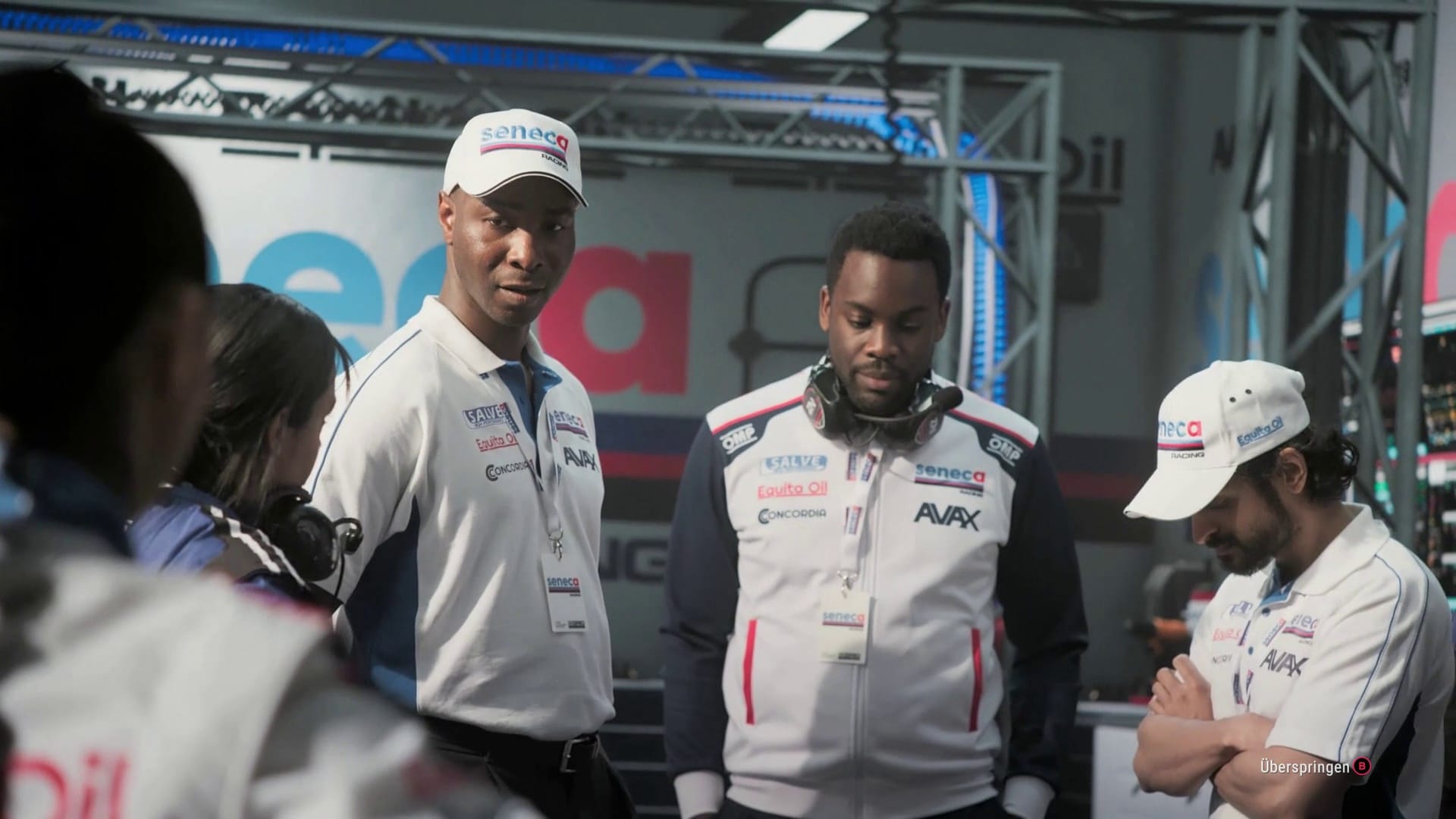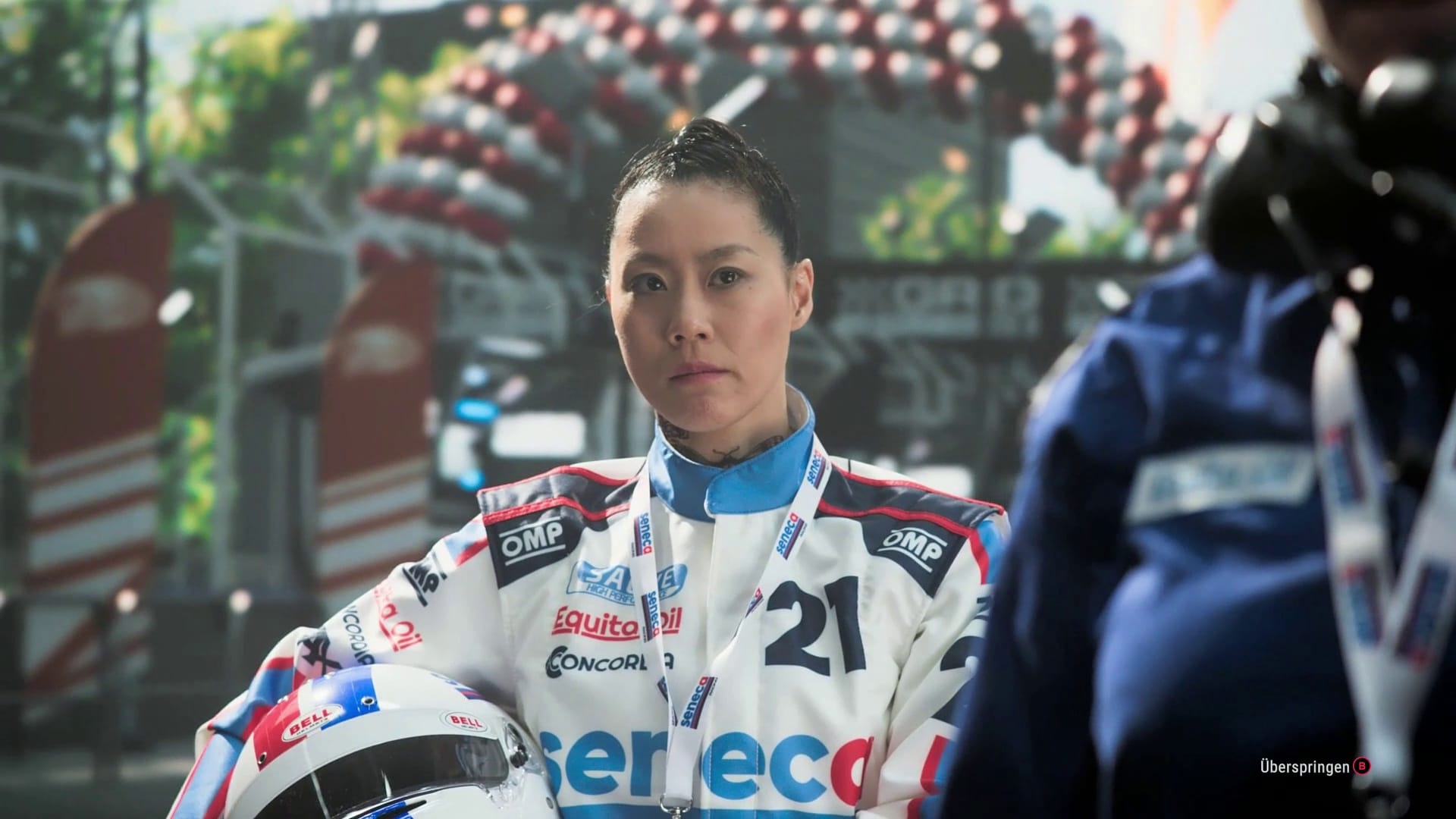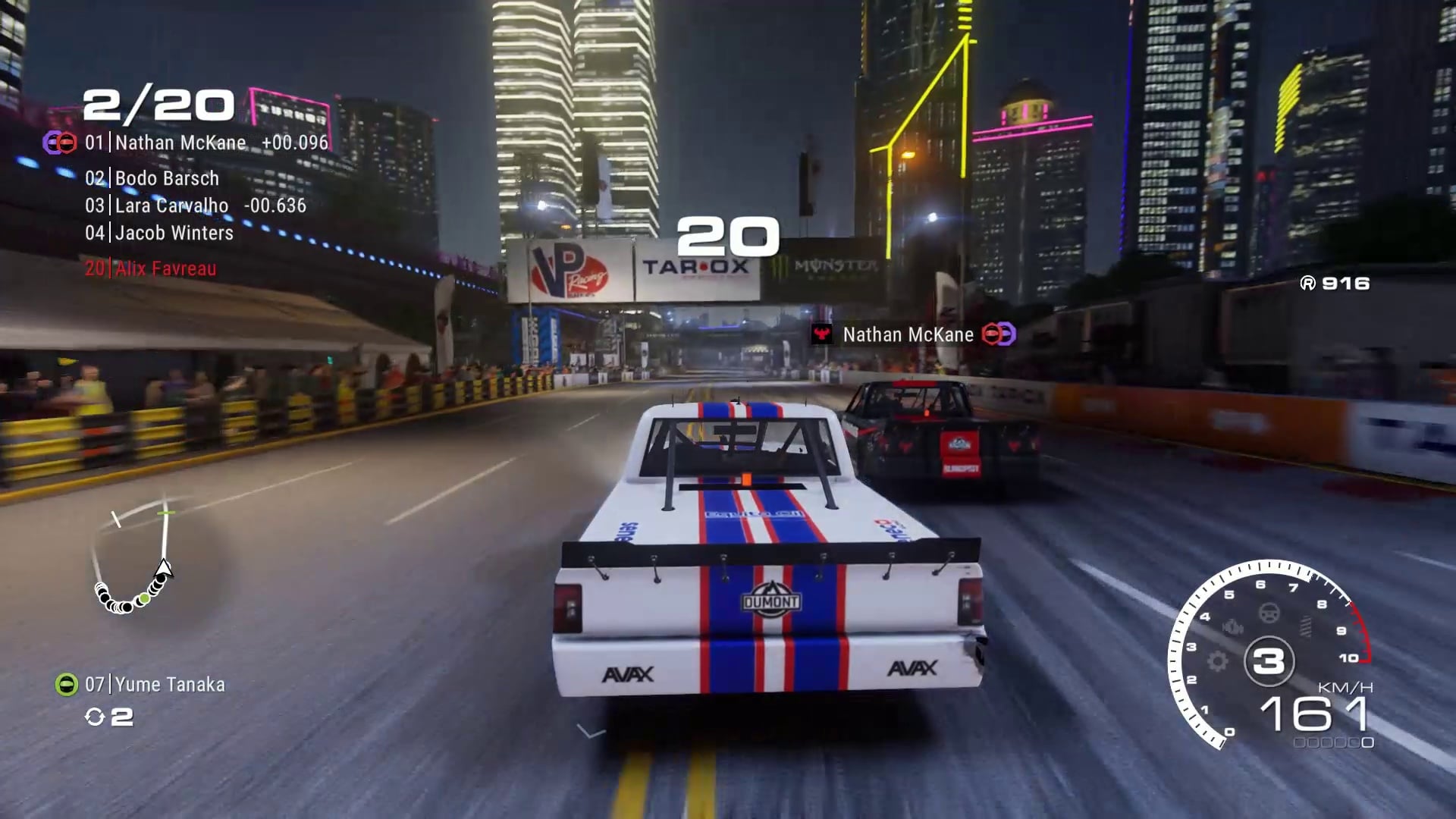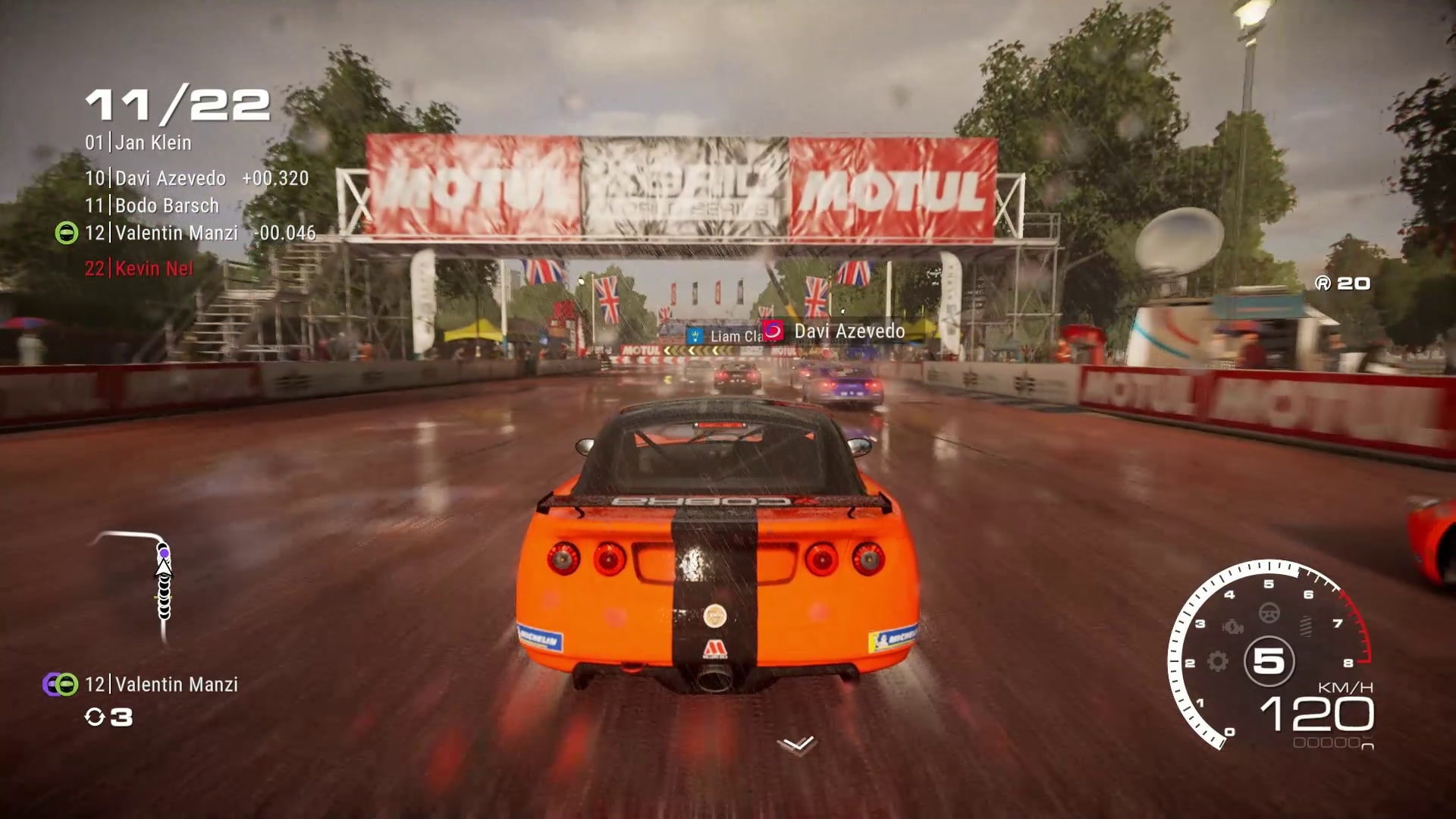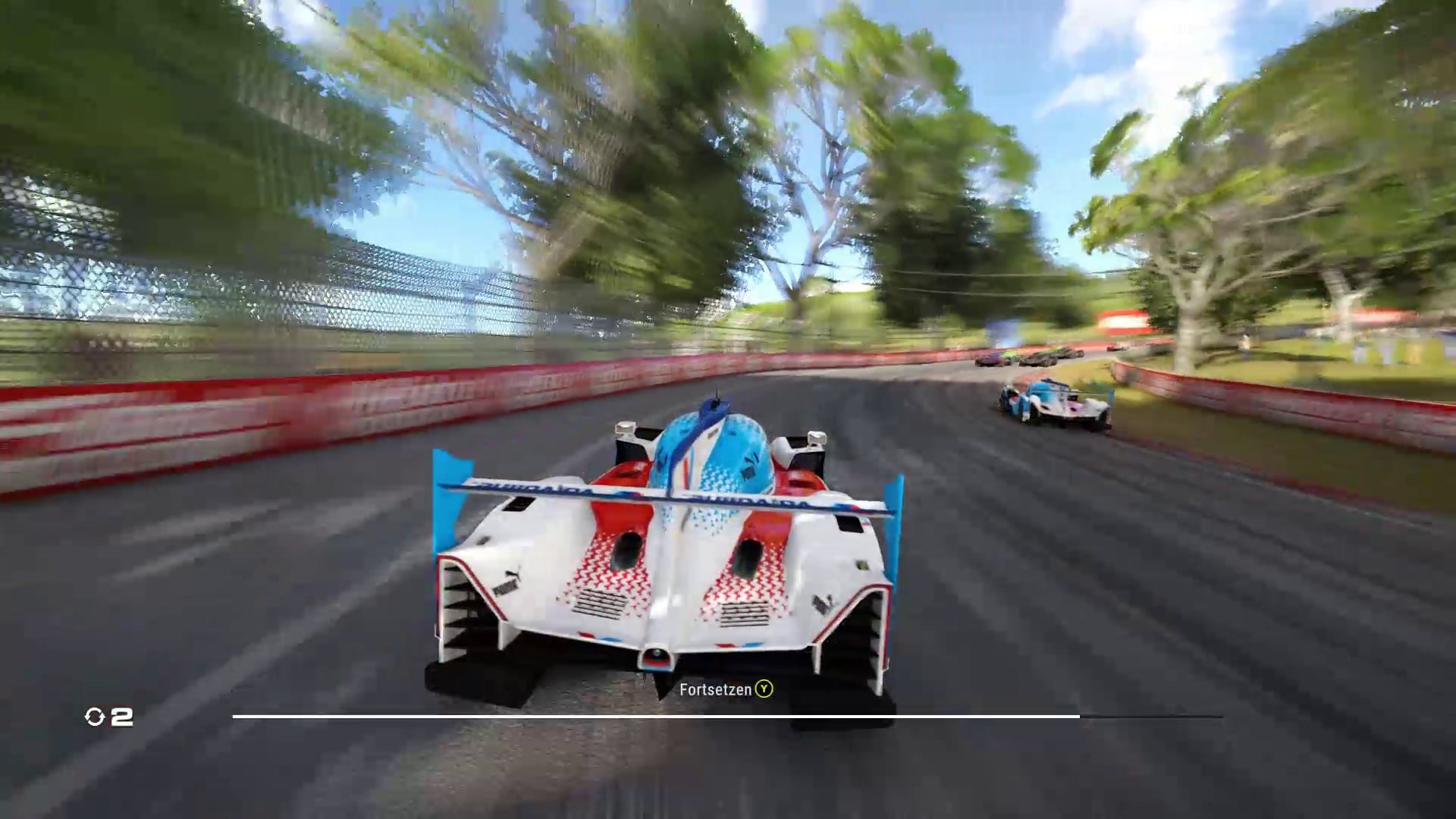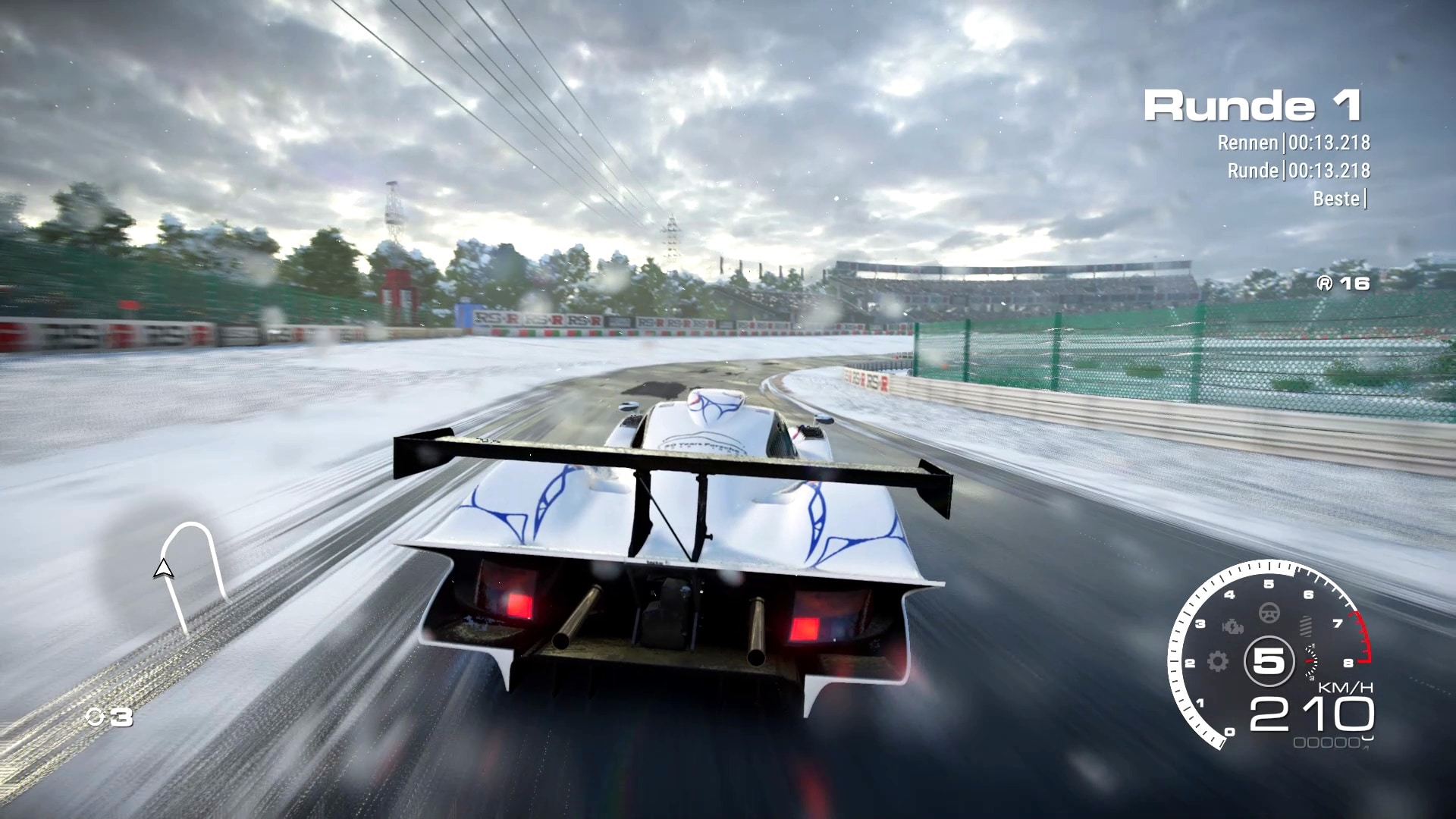With an elaborately staged story mode, Grid Legends wants to return to the glory of the old days. Our test reveals where this plan fails.
With Grid Legends, the fifth part of the popular racing game series from Codemasters was released on 25 February. While the first in the series from 2008 almost enjoys cult status, the successors were never able to convince all along the line, but fluffed in game modes or scope.
Grid Legends is also a really good racing game, but it cannot qualify for the front row. In too many places, the title fails to achieve the goals it set itself, namely to set new standards in the genre in terms of story and career mode.
Table of Contents
Hard-hitting competition with soap opera charm
The heart of Grid Legends is the new story mode called Driven to Glory, in which you slip into the skin of driver 22. You will be guided through the story by atmospherically staged cutscenes in which real actors meet lots of CGI backgrounds.
Your mission is to help the crisis-ridden Seneca Racing team to reach the top of the prestigious Grid World Series. To do this, you have to compete in a total of 36 races, in which you are repeatedly given different objectives that go beyond simply winning.
This makes for variety, but could easily offer more variation: Most of the time, the team only asks you to cross the finish line in a certain place, while in other events it is enough to finish ahead of your rival.
Despite the thoroughly exciting starting point, don’t expect a narrative masterpiece. The plot of Grid Legends only takes place in the cutscenes, the races themselves remain largely untouched by the events off the track. There is hardly any character development and only a few minor twists. The rest of the story is rather carried by clichés, but is at least very atmospherically staged.

Packing races with pretty visuals
The story mode is only convincing to a limited extent, but without further ado we now come to the greatest strength of Grid Legends: the races themselves. The races are a lot of fun, which is mainly due to the staging and the mostly convincing technology.
It doesn’t matter if you’re racing on the streets of Barcelona, London or Moscow, or if you prefer to race on classic racetracks for endurance and drift events: In Grid Legends, the events always feel intense, as if something is really at stake. The sense of speed is superb, sparks are constantly flying, fireworks and confetti are set off and the fast-paced music will heat you up even more, bringing beads of sweat to your forehead.
The graphics are beautiful and convince with sharp textures, numerous particle effects, harmonious lighting and the successful depiction of rain and snow. Although it can’t hold a candle to the top dog Forza Horizon 5, Grid Legends always runs as smooth as butter, even in the most action-packed moments.
The track layouts are pleasantly varied, but somewhat unimaginatively designed. Every now and then there is a small chicane, otherwise you can expect numerous straights followed by a slow or medium-fast curve that releases you onto the next straight. There could have been more room for improvement here.
Lose AI, I dare you!
A little more oomph wouldn’t have hurt the AI either. For the most part, your opponents act cleverly, drive hard against each other and even make believable driving mistakes now and then. The racing action is further intensified by the nemesis system: if you act recklessly on the track, some of the other drivers will soon have it in for you and take noticeably more brutal action against you, which can be quite nerve-wracking, especially when fighting for the lead.
Unfortunately, even on the higher difficulty levels, your opponents seem quite toothless when defending and overtaking. Most of the time we can brake past at the entrance to the bend without any resistance and as soon as the AI starts to overtake, a small jerk with our tail is enough to dissuade them from their plan. We therefore recommend that even beginners start directly with the medium AI difficulty level so that the races provide a certain challenge.
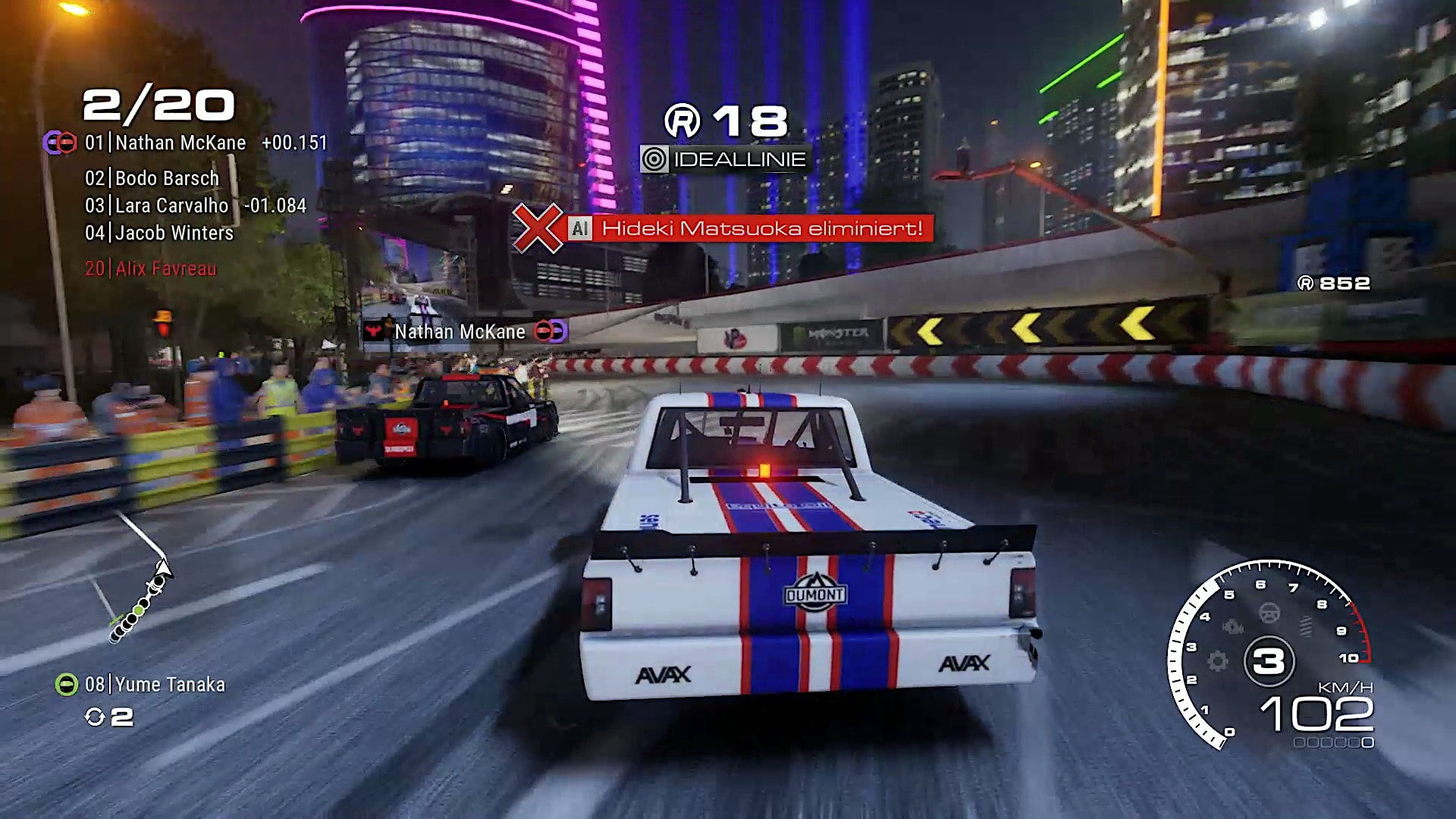
Skilled driving and rewind airbag
Let’s move on to the subject of driving physics, which has improved significantly compared to previous pre-release versions. The cars steer smoothly and, above all, predictably. Even with the controller you can literally feel the mass of the cars, which is why it’s a real pleasure to throw them into the corners after a hard braking manoeuvre. The sometimes strange spins at the slightest contact with a wall also no longer occur.
The rain and snow races are a special challenge for your driving skills. Of course, the different weather conditions also change the driving behaviour of your high-performance behemoth. If you get on the gas too early or off it too late, you will quickly end up in the wall or the gravel bed.
But this is no reason to end your glamorous racing career. Because the usual rewind function for Codemaster racing games is of course also available in Grid Legends. At the touch of a button, you can undo your mishap and try again.
This? That’s just a scratch!
The accidents, however, reveal a major negative point of Grid Legends, namely the poor damage model. Although the damage can be adjusted in the game options from purely visual to mechanical effects, the condition of your car is hardly noticeable to the eye. At least the handling of your vehicle becomes noticeably more tricky, until at some point you come to a complete standstill.
As we know, we don’t shy away from any risk for you, so we drove straight ahead in the legendary 180R curve in Suzuka, Japan, and crashed into the wall at a speed of 280. A subsequent camera tour around our car revealed only a few dents even on the bonnet, although normally even the ADAC wouldn’t be able to help us after this crash.
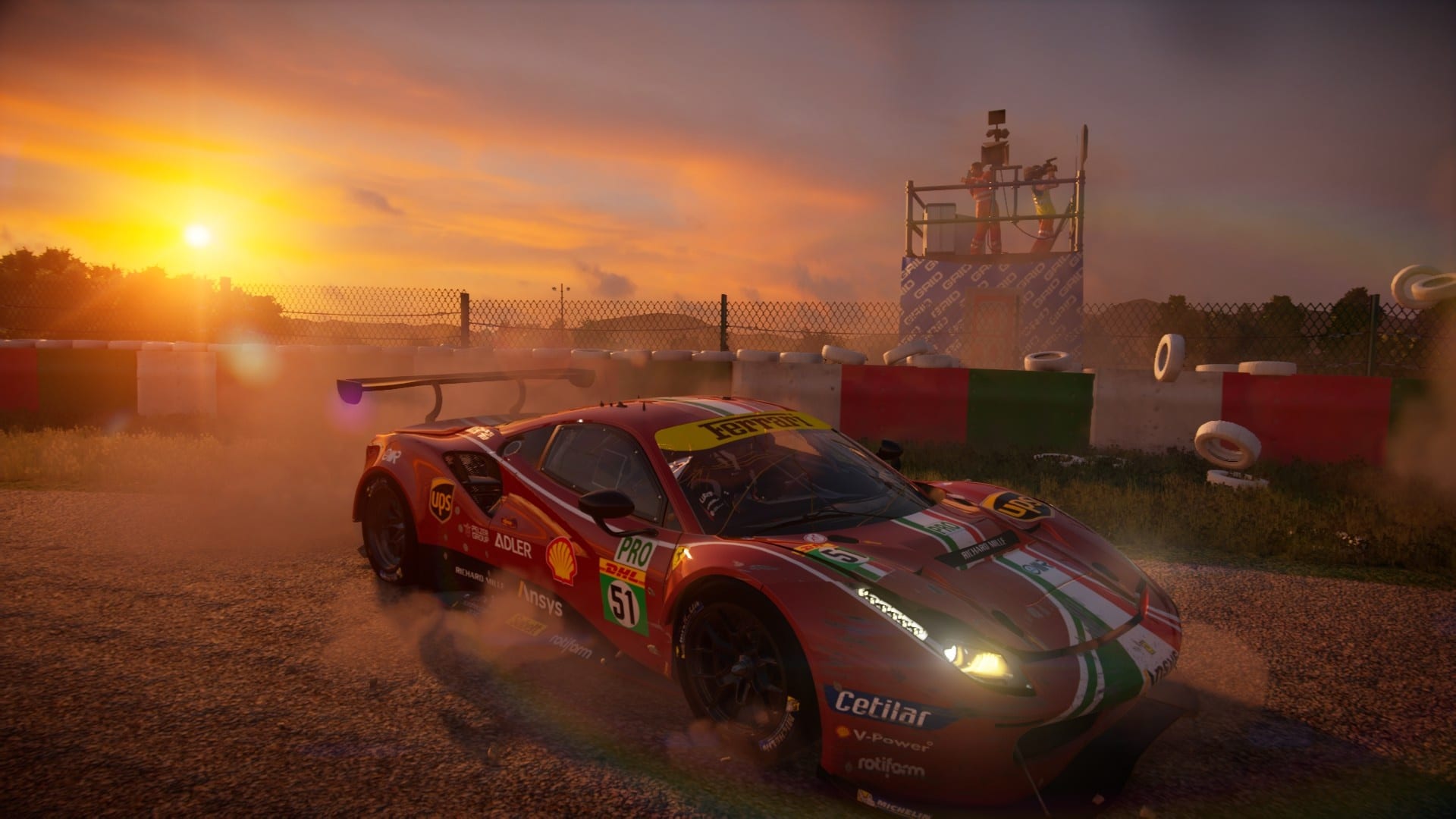
Variety in everyday racing
For those who aren’t interested in the story, Grid Legends offers plenty of other options to train your virtual accelerator foot. In the career, however, you basically do the same as in the story mode, only without the cutscenes, but with a free choice of cars. Starting in the rookie class, you reel off one event after the other in order to advance to the next higher category. Unfortunately, the races are monotonously strung together without any special challenges to liven up the course.
The multiplayer mode ran smoothly in our test sessions and offers the so-called jump-in feature, which allows you to enter a race that is already in progress without waiting. You then take over one of the AI cars and are immediately in the middle of the action. This is comfortable, but you have no influence on where you finish. So it can happen that you fight for the podium or for the golden pineapple in penultimate place.
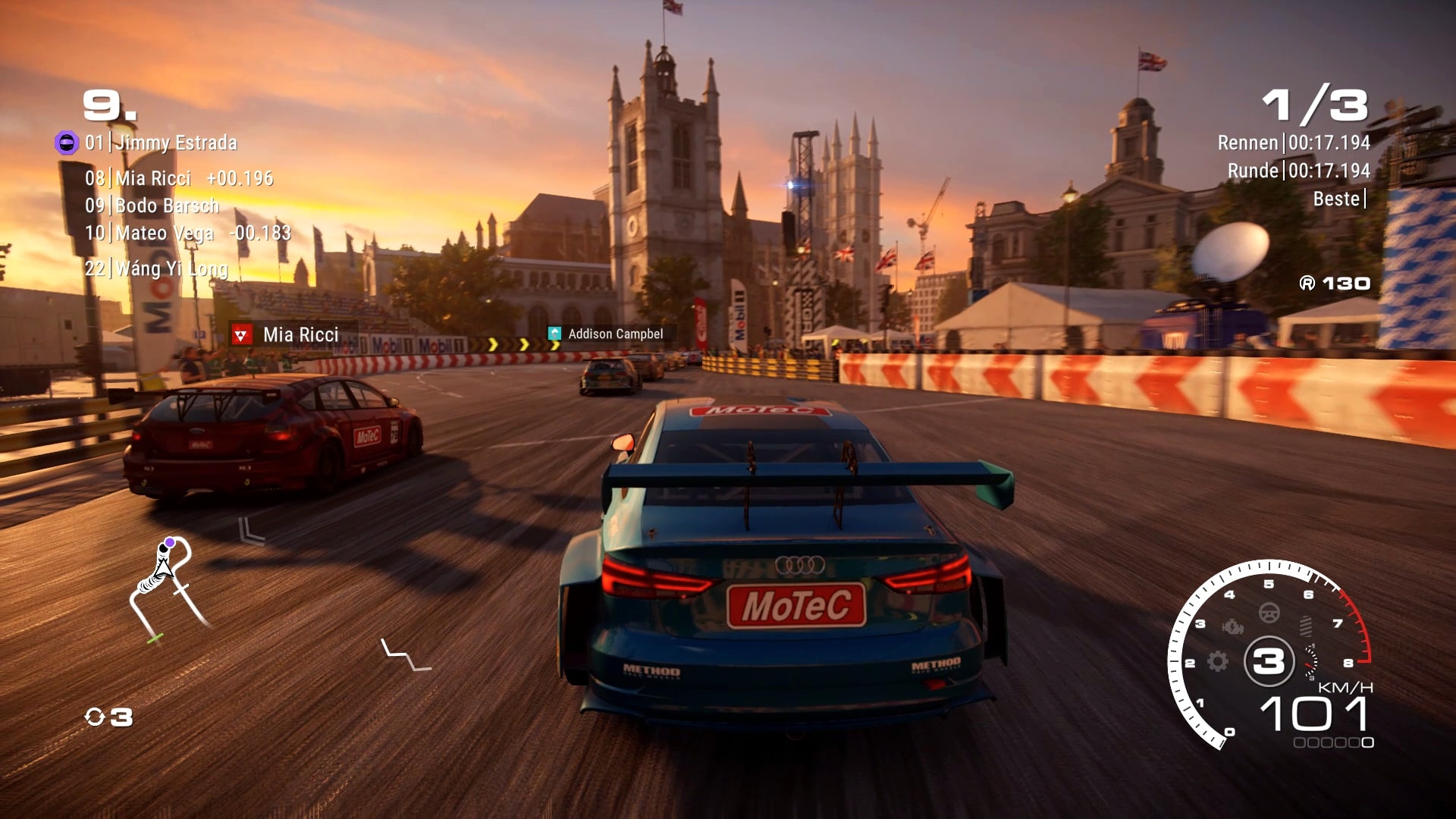
The third mode is the race editor, which turned out to be the unexpected highlight of Grid Legends for us. Here you have the entire portfolio of 22 locations including several track variants, over 130 cars and nine race series at your disposal, so that you can create your own event as you please. You can also determine the time of day and the weather conditions.
At the touch of a button, you can even play the result in multiplayer. So if you fancy switching off after work with a few fast-paced races together with your friends, you’ll find enough content here for the coming months. Further tracks and cars have already been promised by the developers as part of several DLCs.
A team management that didn’t need it
No matter what activity you choose in Grid Legends, there are always rewards at the end of a race in the form of money and experience points. This is a good decision as it means you are not forced to play a mode you don’t feel like.
With the money you can buy new cars or upgrade your existing fleet. The experience points are used to expand your team. But this sounds more pompous than it really is. In the game’s unadorned main menu, you give your team a name, choose an emblem and a sponsor who will bring you additional money.
The experience points can be used to improve your second driver. This means that he drives better in the rain or defends himself more efficiently. However, this does not have a big impact. As long as you do well yourself, your number 2 does not play a big role. Alternatively, you can invest your EP in the mechanics, so that repairs become cheaper or you get a bonus on earned EP and credits.
As fun as the team management may sound, it unfortunately remains too superficial. Whereas in the first Grid, which is already 14 years old, you expanded your garage and team in fancy menus, not to mention in the motivating career mode, in the new part of the series everything takes place in the dreary main menu.
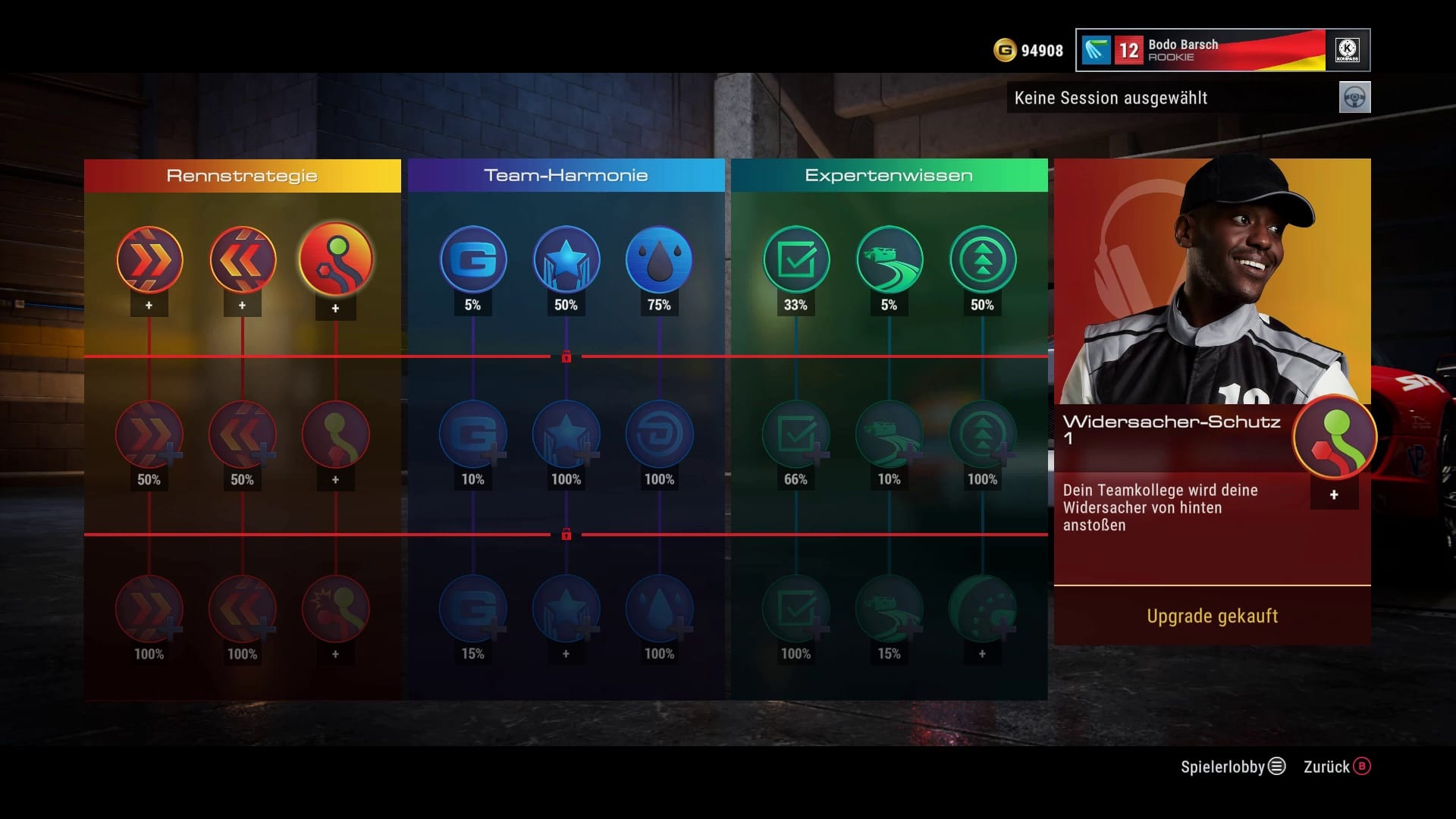
Too much wasted potential
Story mode, career, multiplayer, team management, race editor – Grid Legends offers you a lot of content that is fun to play individually. But Codemasters should have worked on the combination of these contents a bit more.
Why don’t you unlock unique vehicles in the course of the story, which can then be tested in the race editor? Why wasn’t team management integrated into the story, which is all about the rise of Team Seneca? Why does the career mode basically consist of one race after the other?
These are questions that come up again and again during the game. Added to this are the mediocre damage model and the somewhat too tame AI. Grid Legends is by no means a bad racing game, quite the opposite. The races themselves are a lot of fun, and if you’re in the mood for uncomplicated racing in which the action is intense, you’ve come to the right place.
But in order to reach the top in this genre, in times like Forza Horizon 5, it is no longer enough to offer several good individual parts via a bland main menu. You also have to skilfully combine these individual parts into a harmonious and, above all, motivating whole. And Grid Legends doesn’t manage to do that.
Editorial conclusion
Gosh, how I wish I could have given Grid Legends a higher rating. Because the races in and of themselves are simply fun and especially in multiplayer I clawed my way to the steering wheel. Then there’s the extensive race editor, which guarantees months of driving fun with its numerous possibilities and finally fulfilled my dream of driving Suzuka in the snow.
But unfortunately the list of shortcomings is simply too long. The half-baked damage model seems strange in a racing game that virtually forces the cultivated contact with sheet metal. In a work report, I would give the story credit for always having made an effort. And why has the team management been outsourced to the main menu instead of letting me create my own racing team in the very monotonous career, which I can lead to success?
Grid Legends has to ask itself whether it was the right decision to offer a little bit of everything instead of focusing on one core aspect. I keep getting served appetisers, but I never really get full. That’s a shame, because I fear that Grid Legends could disappear into oblivion pretty quickly as a result. And the fun races don’t deserve that!


